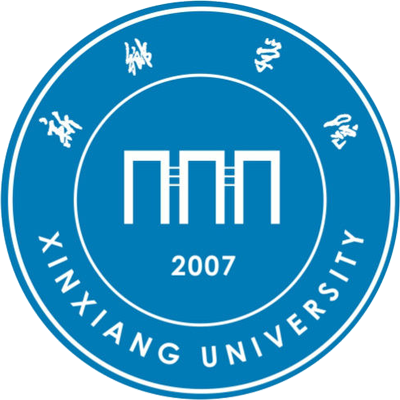详细信息
不同加压方式介入抗阻训练对腿部肌肉量影响的生物力学研究
Biomechanical Study on Influence of Different Resistance Training Combined with Blood Flow Restriction Methods on Leg Muscle Volume
文献类型:期刊文献
中文题名:不同加压方式介入抗阻训练对腿部肌肉量影响的生物力学研究
英文题名:Biomechanical Study on Influence of Different Resistance Training Combined with Blood Flow Restriction Methods on Leg Muscle Volume
作者:李尚华[1,2];刘志云[1]
第一作者:李尚华
机构:[1]天津体育学院体育教育与教育科学学院,天津301617;[2]新乡学院体育学院,河南新乡453003
第一机构:天津体育学院体育教育与教育科学学院,天津301617
年份:2020
卷号:45
期号:8
起止页码:111-119
中文期刊名:西南师范大学学报:自然科学版
收录:CSTPCD;;北大核心:【北大核心2017】;
基金:河南省软科学研究基金项目(202400410091)。
语种:中文
中文关键词:加压训练;抗阻力训练;肌肉量;肌肉力量;神经交叉迁移
外文关键词:training combined with blood flow restriction;resistance training;muscle volume;muscle strength;nerve cross migration
摘要:为探讨8周不同加压抗阻训练对受试者腿部肌肉量、下肢等速肌力及跳跃表现的影响,选择24名大学足球专选班学员为实验对象,将其随机分为低加压高阻力组(0.7SBP+70%1RM)及高加压低阻力组(1.7SBP+40%1RM),分别进行为期8周、3次/周、5组/次、12次/组的反复训练,于训练前、组后进行相应的力学与生理指标测试,并运用SPSS 21.0统计分析软件对相关指标进行评估.结果显示:①低加压高阻力组训练后双腿肌肉量皆呈显著增加之势,其中加压腿从前测(8.43±2.11)kg增至后测(8.96±1.25)kg,而非加压腿从前测(8.37±1.59)kg增至后测(8.71±2.06)kg,而高加压低阻力组未有显著进步;②低加压高阻力组与高加压低阻力组经8周训练后其大腿推蹬1 RM力量皆有显著提升,其中低加压高阻力组的加压腿从前测(256.09±45.25)kg增加至后测(351.68±71.21)kg,高加压低阻力组则从前测263.23 kg增加至后测(340.45±70.83)kg,且低加压高阻力组的增加量显著高于高加压低阻力组;③低加压高阻力组在1.04 rad/s及3.14 rad/s 2种角速度下屈膝时的加压腿等速肌力及在3.14 rad/s下伸膝时无加压腿的肌力矩峰值皆显著优于前测,而高加压低阻力组在1.04 rad/s与3.14 rad/s 2种角速度下的膝伸及膝屈皆显著优于前测;④2组的原地摆臂垂直跳与跨步摆臂垂直跳表现皆显著优于前测,但高加压低阻力组提升效果要优于低加压高阻力组.结论:低加压高阻力训练法对提升腿部肌肉量有显著效果,且在等速肌力表现上对加压腿更有利,而高加压低阻力训练在肌力上的表现上,不论是介入腿还是非介入腿皆有显著提升;2组训练方法皆可增进跳跃表现,但高加压低阻力训练效果更佳,测试参数的改变似乎受阻力运动的影响更大,而加压的影响有限.
To explore the influence of 8-week different pressure and resistance training on the leg muscle volume,isokinetic muscle strength and jumping performance of the subjects have been studied so as to provide references for how to use the pressure method scientifically in the field of sports training and health rehabilitation in the future.Twenty-four college students in football class were randomly divided into two groups:low pressure and high resistance group(0.7 SBP+70%1 RM)and high pressure and low resistance group(1.7 SBP+40%1 RM).They were trained for 8 weeks,3 times/week,5 groups/time and 12 times/group respectively,and their Mechanical and physiological indexes were tested before and after the training.Spss21.0 statistical analysis software was used to analyze the correlation Indicators are evaluated.Results show that:1)After training,the muscle mass of both legs increased significantly in the low pressure and high resistance group,in which the weight of the legs increased from(8.43±2.11)kg measured in the front to(8.96±1.25)kg measured in the back,while the weight of the legs without pressure increased from(8.37±1.59)kg measured in the front to(8.71±2.06)kg measured in the back,while the weight of the legs in the high pressure and low resistance group did not improve significantly;2)After 8 weeks of training,the leg push and pedal 1RM of the low pressure high resistance group and the high pressure low resistance group increased significantly.The pressure leg of the low pressure high resistance group increased from(256.09±45.25)kg measured from the front to(351.68±71.21)kg measured from the back,and that of the high pressure low resistance group increased from 263.23 kg measured from the front to(340.45±70.83)kg measured from the back,and the increase of the low pressure high resistance group was significantly higher than that of the high pressure low resistance group;3)The peak values of isokinetic muscle force moment in 1.04 rad/s and 3.14 rad/s knee flexion plus compression leg and 3.14 rad/s knee extension without compression leg in the low pressure and high resistance group were significantly better than those in the pretest group,while the knee extension and knee flexion in 1.04 rad/s and 3.14 rad/s in the high pressure and low resistance group were significantly better than those in the pretest group;4)The vertical jump of the swing arm in place and the vertical jump of the step swing arm in the two groups were significantly better than the pretest,but the lifting effect of the high pressure and low resistance training group was better than that of the low pressure and high resistance group.It is concluded that low pressure and high resistance training method has significant benefits in improving leg muscle mass,and it is more beneficial in the performance of isokinetic muscle strength,while high pressure and low resistance training has significant improvement in the performance of muscle strength in the intervention leg and non intervention leg.Both groups of training methods can improve jumping performance,but the effect of high pressure and low resistance training is better.The change of test parameters seems to be more affected by resistance movement,while the effect of pressure is limited.
参考文献:
![]() 正在载入数据...
正在载入数据...


